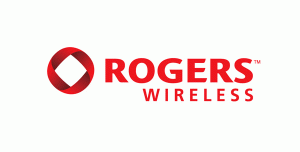There’s Something About Competition: Rogers and Bell, a Network Test
There is something to be said for competition. For many years in Canada, we did not have much competition in the cellular world. There was only one choice if you wanted the best phones, with the ability to switch your SIM card, and therefore save yourself a lot of hassle, if you bought a new phone. More importantly, most of the “good” phones, those coming from Asian companies like Nokia and HTC, were made only for GSM networks.
Rogers was the company everyone relied on to be the faster network with the better phones. When the iPhone 3G was released in 2008, the network was inundated with new customers who wanted Apple’s Wonderphone on a faster network. Bell and Telus, the two other incumbent Canadian national carriers, were operating aging CDMA networks. Their speeds were limited, as well as their ability to give customers the choice between switching phones easily. It took a call to customer service, which usually involved waiting on hold for a long time, to get your phone switched, and even then, the number of choices was quite limited. CDMA seemed on the way out (note, with Android proliferating and Sprint and Verizon each getting exclusive, high-end Android devices lately, there is no doubt that the technology is not going down without a fight).
In 2008, we started hearing inklings of a new GSM network being built in Canada. Bell and Telus would join forces and install the fastest, most comprehensive 3G network in Canada. It’s top speeds would triple Rogers’ at the time, and would provide more service to more Canadians. The network launched in late 2009 to much fanfare, though to the average customer, the emphasis on speed was touted over anything else. With the new network, you would get faster speeds in more places. What they didn’t tell you, however, was that because they were not building on top of any existing infrastructure like Rogers was doing, building their 3G network on top of a very mature 2G network, if you chose to go with Bell or Telus and went out of 3G range, there would be no service at all. For most people this would be no problem, but it does bring to light the advantage of experience and the limitations of having the latest and greatest.
Which brings me to my test today. I wanted to check the claims that Bell and Telus’ new network is indeed the fastest in Canada. For most people the speed differences are going to be negligible. Rogers 3G offers 3.6Mbp/s, while its competitors offer double that speed. I recently bought a Google Nexus One phone, which is factory unlocked, and is compatible with Bell and Rogers 3G. I was using it on Rogers for many months with no issues, but when I activated my Bell account, I decided to pop in the SIM and see how it felt.
The first thing I noticed that was the device felt much faster. Loading anything with data was much quicker; websites, Twitter, downloads. But I wanted to be sure.
First the breakdown: real-world feel, and then actual benchmarks using Speedtest.net’s Android app:
With Bell, websites load noticeably faster and downloads exceed hundreds of KB/s. When loading Touiteur, a Twitter client, I counted an average of 3 seconds to reload the timeline, while Rogers often took more than 5 seconds. Reception as well, in downtown Toronto, seemed to be more consistent with Bell. Though I realize that there is no 2G network to fall back on, with such a comprehensive network in large urban areas, I have yet to hit a dead zone in the GTA.
Loading Touiteur:
- Bell: 3.2s
- Rogers: 5.3s
Loading NYTimes.com
- Bell: 6.8s
- Rogers: 8.3s
Speedtest.net app
Test 1 - Thornhill, Ontario, Thursday 8pm
- Bell: 1.6Mbp/s Down, 0.95Mbp/s Up
- Rogers: 1.3Mbp/s Down, 0.73Mbp/s Up
Test 2 - Downtown Toronto, Friday 10am
- Bell: 3.8Mbp/s Down, 1.79Mbp/s Up
- Rogers: 2.3Mbp/s Down, 0.79Mbp/s Up
As you can see, it’s fairly consistent. The time it takes for data to kick in is sometimes faster on Bell, sometimes on Rogers. This is a direct result of the high latency associated with 3G networks. It will only improve once 4G networks become the standard; this may not happen, at least in Canada, until 2011 or 2012.
I am happy with Bell’s network. I think they have done an excellent job, at least where I live, in bringing consistently fast network performance.
What’s better though is that both companies, and Telus, the third major carrier, are playing on equal footing these days, and it means better prices for consumers. In spite of the fact that they do not seek to compete in the realm of monthly tariffs, that they are able to offer the latest and greatest GSM phones is already helping bring down the cost of subsidized handsets. Many people complain about how Rogers/Telus/Bell are not competitive, and that Canadians pay more for our monthly voice and data packages. I believe, for the most part, that is true. But now that the requisite infrastructure exists to allow for the proliferation of high-speed 3G and 4G HSPA+ and LTE/WiMAX networks throughout the country, voice and data are accessible to a greater number of people, and the fact that there are new players in the market brings, for the first time, true alternatives.
Surely, there is something about competition.


















